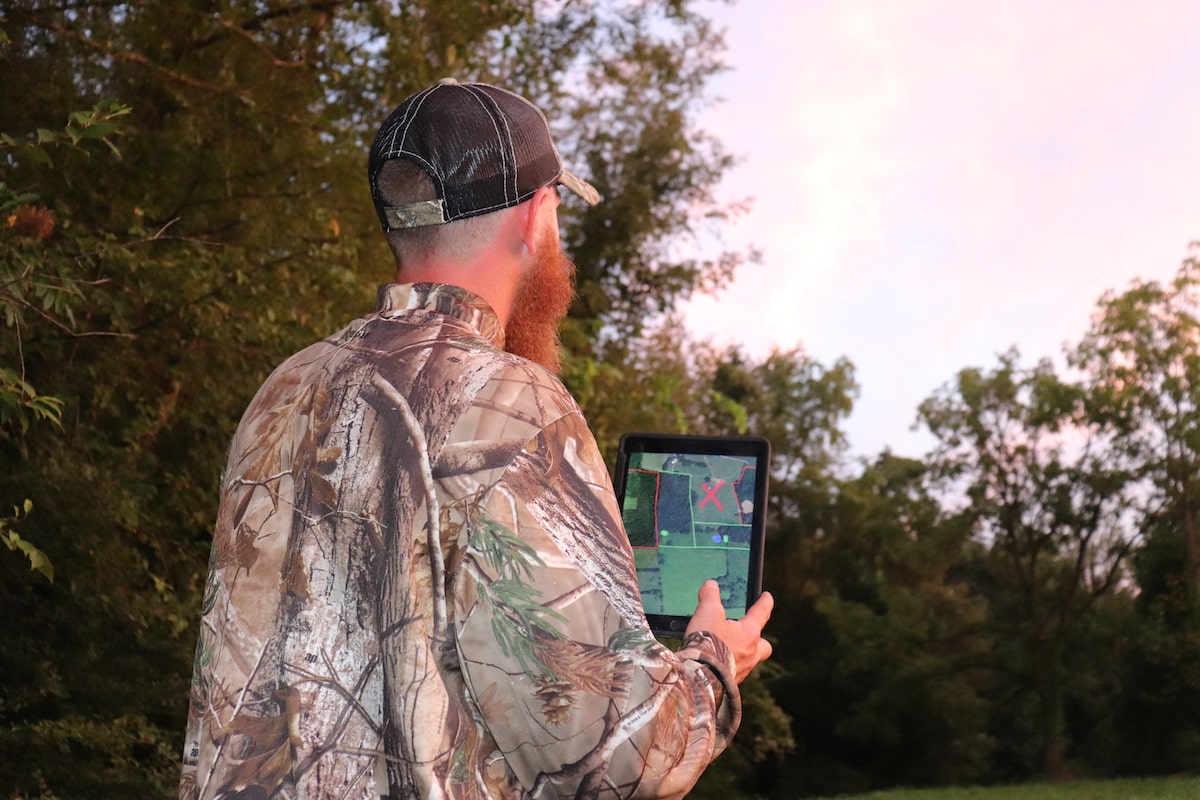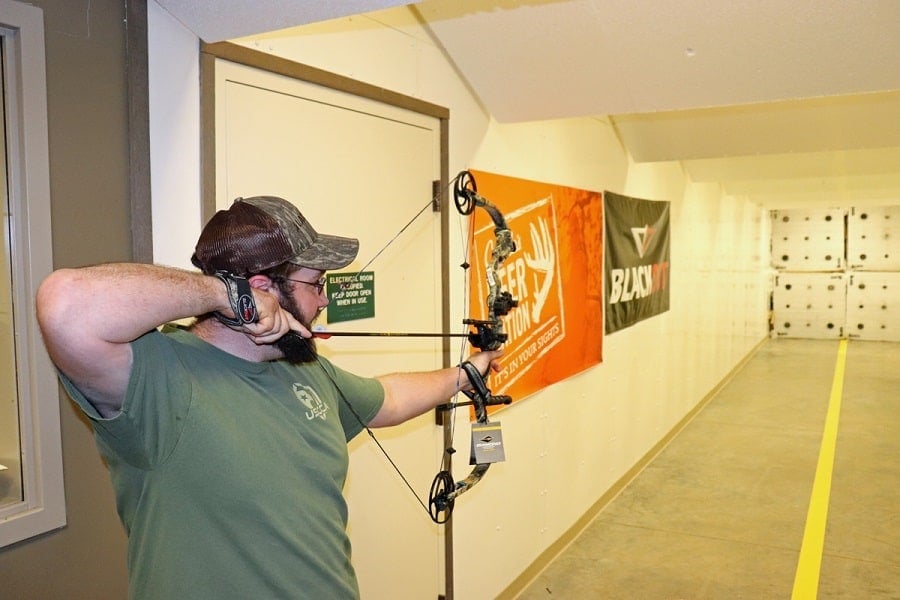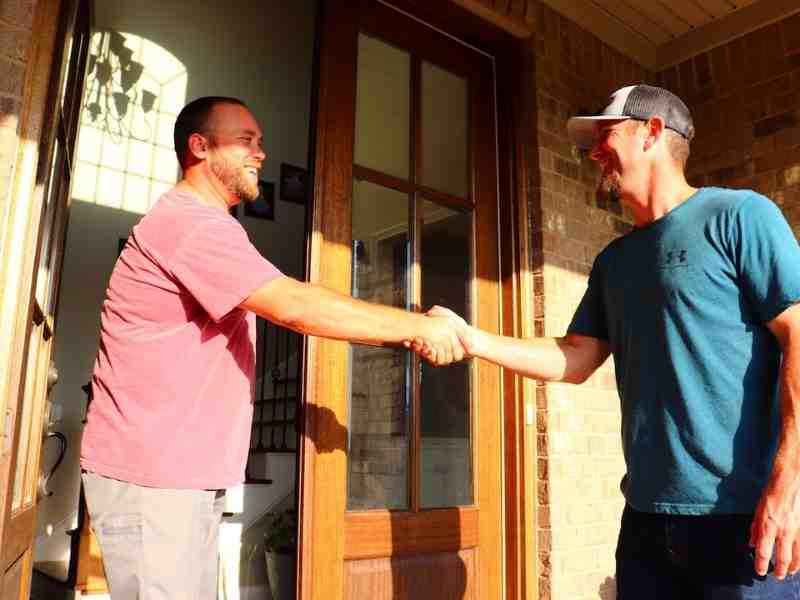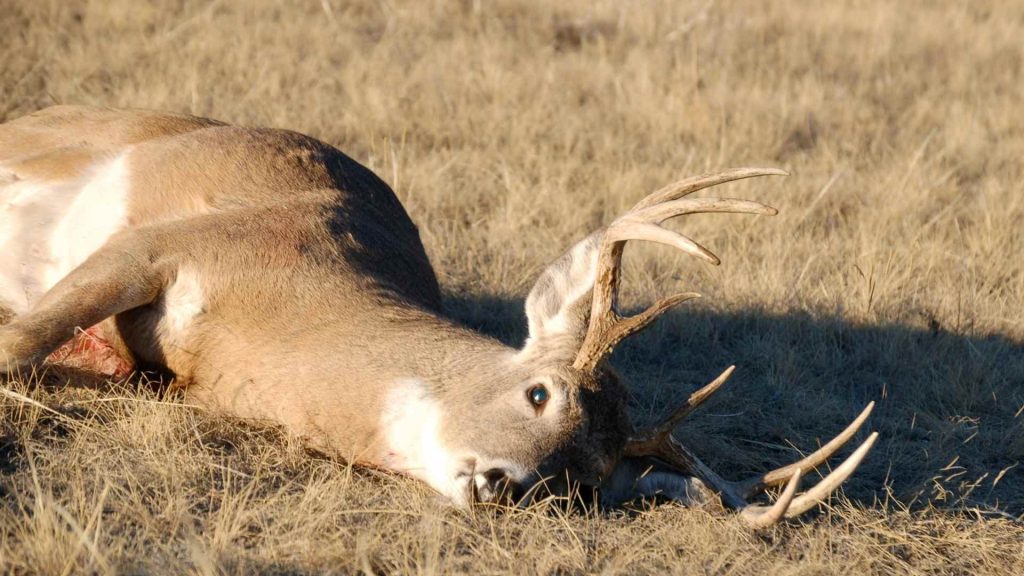As the sport of archery continues to grow in popularity and school-based archery programs flourish, it is only natural to observe a significant rise in bowhunter recruitment.
This is especially true when new archers are coupled with experienced bowhunters in mentorship of sorts. However, not all prospective bowhunters are presented with this luxury, leaving one to fly solo when learning their craft.
Without a bowhunting mentor to provide guidance, many new hunters are faced with a significant learning curve to overcome.
The world of bowhunting is far too broad to navigate overnight and requires a significant degree of trial and error when faced without first being pointed in the right direction.
We have assembled the following content for this exact reason. What follows is a comprehensive guide for beginning bowhunters, aimed at providing a firm foundation and basic guidance for those undertaking such endeavors.
Contents (Jump to Topic)
ToggleSo You Want To Bowhunt?
If you are reading this, you have likely decided that you want to give bowhunting a try or are at least currently entertaining such a notion. Let us start by saying, “Congratulations.” Bowhunting is one of the most enjoyable outdoor activities and often becomes a life-long passion for its practitioners.
In time, you will hopefully find immense enjoyment while partaking in such wonderful endeavors.
Let me preface by stating that bowhunting is a sport of discipline. Like archery itself, one only becomes a successful bowhunter through steadfast dedication, repetition, and unrelenting practice.
There are lessons to be learned with each hunt, as with each trip to the archery range. Luckily, the passion that surrounds this sport as a whole makes any hardships trivial in hindsight.
If all described above sounds like a welcome addition to your life, you are in luck. Your bowhunting journey begins today. We will now dive into the basics of bowhunting, starting at the ground level.
Choosing Your Equipment
Before departing for the woods, one must first procure all essential gear for their hunt. Finding gear that you are comfortable with and allows you to perform at your best is crucial to success.
While this equipment list is not overly lengthy, each item carries its weight and is of major significance.
The following are the essential items required to begin bowhunting.
Bow
First and foremost, you must select a bow that suits you well and is comfortable to shoot. While one can undoubtedly hunt with traditional bows, such as recurve and longbows, most new bowhunters opt instead to use a compound bow.
This stems from the fact that these bows are more forgiving than their traditional counterparts and feature some degree of draw weight let-off at full draw.
The best bow is one that you can shoot without discomfort, and that feels seamless in hand.
Today, many highly adjustable compound bows are available for purchase, making it easier to locate a particular model that fits your specific needs in terms of draw weight and draw length.
For further guidance, check out some of our hands-on bow reviews, or seek the assistance of a professional archery tech.
Release
Unless you intend to shoot purely with your fingers, you will want to find a well-suited release to your shooting style.
There are several different types of release aids for one to consider, each of which carries its distinct advantages.
Perhaps the most common of all release aids are the index finger release. Release aids of this type feature a wrist strap that velcros or buckles in place.
Meanwhile, a trigger mechanism attached to this wrist sling is situated toward the end of an archer’s index finger. The index finger is used to trigger a release of this type.
Alternatively, many archers employ the use of handheld, thumb-actuated release aids. These devices are held within the palm of an archer’s hand and are triggered with a squeeze of the thumb. Release aids of this type are equally popular among target archers and bowhunters alike.
Also popular are resistance, or back-pressure triggered release aids. These devices have no dedicated trigger and rely upon the steady addition of tension for actuation, providing a “surprise” release. This eliminates flinching at the shot or when pulling the trigger.
Arrows
Before hitting the woods, an archer must also procure arrows to fill their quiver. One’s choice in arrows often comes down to personal preference.
However, a certain amount of caution should be taken when selecting arrows for purchase. An arrow must be heavy enough to compliment the draw weight of a particular bow or else risk potential bow damage.
The exact length of an archer’s arrows will also ultimately be determined by their specific draw length. This is a factor that a qualified archery technician can easily determine in minutes. Additionally, you must decide whether to purchase aluminum or carbon arrows. The latter of which tends to be the most popular option.
Broadheads
When bowhunting, a hunter’s arrow is tipped with a specialty head, known as a broadhead. Heads of this type feature razor-sharp blades, capable of imparting severe tissue damage, leading to rapid blood loss and game expiration.
When a hunter’s shot placement is on point, a quick, ethical kill will result.
Broadheads come in two main types, fixed blade and mechanical. Fixed blade broadheads feature blades of a predictable, static configuration intended to maximize hemorrhaging. On the other hand, mechanical broadheads feature pivoting blades that deploy upon contact, thereby mixing the flight of a field tip with the devastation of a fixed blade.
Practice Makes Perfect
Before taking to the woods, an archer must first become proficient enough in their marksmanship skills to make an ethical shot on actual game animals.
This is only accomplished through steadfast practice over weeks and months. If space permits, training can be conducted in one’s backyard. Alternatively, one can always visit their local archery shop for regular range time.
At first, practice should be limited to relatively short distances, such as 10-15 yards. As you become proficient at these distances, you can extend the distance you practice, moving first to 20-yards. You will find proficiency at longer distances, out to 40-yards or more, with time.
It is worth mentioning that practice should be conducted using the same bow, release, and arrows you intend to hunt with.
This builds confidence in your setup and prepares you for the inevitable moment of truth. However, your broadheads should be reserved for field use, as field tips can be used during regular practice.
Determine Your Pursuit Of Choice
Upon gathering your gear and learning to shoot with reasonable proficiency, you must determine the type of game you wish to pursue.
This will directly impact how you proceed when planning for the upcoming hunting season.
The following are several of the most popular of all bowhunting pursuits.
Whitetail Hunting
The most popular of all bowhunting pursuits in the United States involves the whitetail deer.
This is for a good reason, as whitetails are among the most challenging of all game species to hunt. Deer of this type also make excellent table fare when success is experienced.
Additionally, bowhunting for whitetail deer remains popular due to the extensive range of the whitetail itself. Hunters across much of the continental United States are allowed to hunt such game within proximity of their homes.
Wild Turkey
An ever-growing number of bowhunters are taking to the woods in pursuit of wild turkey with each passing year.
Such pursuits have gained enough popularity over the past decade that many broadhead manufacturers have begun producing their own turkey-specific heads. A bowhunt of this type is sure to prove challenging due mainly to the wild turkey’s excellent eyesight.
The United States is home to several distinct subspecies of the wild turkey, including Eastern Wild Turkey, Rio Wild Turkey, Merriam’s Wild Turkey, and Osceola Wild Turkey.
This presents ample opportunity for hunters from almost every state in the country, no matter their specific location.
Big Game
Aside from deer and turkey, many hunters pursue various big game species annually, with archery tackle in hand.
Some of the most popular big game species include elk, bear, moose, antelope, and caribou. Perhaps most exciting is that pursuits of this nature often take hunters well off the beaten path to some of the most scenic destinations imaginable.
Bowhunting big game is often challenging due to the rough and rugged terrain that must be traversed in many cases to reach your quarry.
This is especially true when elk hunting, which typically turns into an endurance test, pushing even the most seasoned hunters to their extremes.
Staying Legal
Once you have determined the species of game that you wish to pursue, you must ensure that you have acquired the correct licenses and permits before heading afield.
Doing so is not only necessary to avoid potential legal issues, but it is also the responsibility of any ethical, conservation-minded hunter.
The money generated by the sale of such licenses and permits helps fund wildlife stocking and conservation efforts.
Under no circumstances should you ever attempt to save money by hunting without the proper permits.
If caught, the penalties associated with such offenses are often quite steep, ranging from hefty fines to probation and/or jail time. Additionally, any equipment (bows, treestands, ATVs, etc.) used when committing crimes of this type can be seized on-site.
Determining the required permits for our next hunt is as simple as logging on to the Fish and Wildlife agency website in the state that you intend to hunt.
If any questions remain, call or email your state’s Fish and Wildlife agency, or arrange a meeting with your local conservation officer.
Finding Land To Hunt
One of the biggest obstacles facing new bowhunters today revolves around the securement of ample land to hunt.
Urban sprawl has whittled away at our nation’s wild lands, leaving far fewer hunting grounds available for the choosing. This poses quite a complication at times.
Those seeking land to hunt are presented with three main options: purchasing, leasing, and asking permission. The pros and cons of each scenario are provided below.
Purchasing Land
Purchasing a parcel of hunting property provides a hunter with several benefits that they would not otherwise have by any other means.
As the owner of a given property, you can manage your ground as you see fit, cultivating food plots, clearing trails, and constructing semi-permanent shooting houses. These same options are not always available if you, yourself, are not the owner of the property in question.
On the other hand, purchasing property tends to be extremely expensive. It is a long-term investment of the highest magnitude. This is not always possible for the beginning bowhunter but makes an excellent long-term goal for the future.
Leasing Land
Leasing property serves as a middle ground for many hunters seeking a place to hunt. In most cases, signing into a lease provides a hunter with certain rights, as agreed upon within the terms of the lease itself.
This means that a hunter is often granted permission to make minor habitat improvements and hang stands as they see fit. However, such terms are often somewhat restrictive and open for interpretation by both parties.
Generally speaking, leasing property for hunting can be rather pricey. However, doing so is nowhere near as costly as purchasing a plot of land outright.
A certain amount of this cost can also be offset by including several other hunters on the lease.
Seeking Permission
Seeking permission to a given property directly from its owner can be an excellent way of gaining land access.
However, doing so can also prove exhausting, as competition for unoccupied hunting land has grown quite fierce over the last couple of decades.
One must also remember that permission to hunt today does not necessarily imply permission for the long term. A property owner can still authorize others to hunt, even if it leads to overcrowding or conflict.
On a positive note, it costs absolutely nothing to knock on a farmer’s door and politely ask them for permission to hunt on their land.
At worst, your request might be rejected. However, if lucky, you might gain a new place to hunt for years, all without spending a dime.
The Public Route
If none of the options above have panned out, and you are still left without a place to hunt, all hope is not lost. You can always seek out public hunting grounds within your particular state.
Of course, the availability of such grounds often differs from one location to the next. However, many states still offer an abundance of public land opportunities for adventurous hunters.
It is worth mentioning that public land hunting does not come without its share of frustration at times. Land of this type is often crowded with other hunters, necessitating a lengthy walk to find ample elbow room.
Nonetheless, many hunters from all over the country experience remarkable public land success annually. You, too, can achieve this level of success by remaining absolute in your determination and steadfast in your scouting efforts.
Scouting For Success
Much of a hunt’s outcome is determined by a hunter’s preseason scouting or a lack thereof. The actual value of scouting efforts should never be overlooked, as time spent studying and patterning the game you intend to pursue of the utmost significance.
Whether you intend to bowhunt deer, turkey, or any other species of game animal, thorough scouting places you on the fast track to success.
Such efforts reveal key information, such as the location of bedding areas or roost sites in the case of turkey. You can also easily uncover the whereabouts of favored food sources in an area.
Combined, these tidbits of information allow you to focus your efforts better while afield. You are afforded a greater chance at success if you have scoured an area, as you can hunt far more efficiently, wasting less time on unproductive stand locations.
Handling The Moment Of Truth
There comes a time in every new bowhunter’s career when they find themselves faced with the moment of truth for the first time.
After months of careful planning and hard work, your long-awaited shot opportunity has finally arrived. How you handle the next 30-seconds will serve as the deciding factor between success and heartbreak.
In truth, one can never fully prepare themselves for such a scenario. A wave of adrenaline overcomes us as we try to calm our nerves and regain our composure. This is where a summer’s worth of practice pays dividends.
Through repetition, muscle memory is built. This same muscle memory is what allows us to draw our bows instinctively, take aim, and release our arrows, seemingly without a moment’s hesitation.
The key to making the most out of your shot opportunity is to aim with intent. Rather than falling victim to target panic, select a single spot or tuft of hair atop a game animal’s vitals to aim at. Concentrate feverishly on this single spot while following through with your release.
After The Shot
The moments directly following your arrow’s release are every bit as necessary, if not more important than those leading up to it.
One must keep their composure while making mental notes pertaining to the body language of the game animal that has been shot.
Attempt to determine the exact placement of your arrow and the status of the animal in question.
Deer shot through the vitals typically run low to the ground, with their tails tucked. In contrast, deer shot through the paunch tend to run a short distance before walking off slowly in a hunched-up manner.
On should also earmark the last place that they saw the wounded game animal before it disappeared from the site.
Use various landmarks, such as trees and fence rows, to gain a better perspective in this regard. If possible, apply reflective tape to the spot where this animal was last seen.
Finally, locate and inspect your arrow for signs of blood.
Vital blood tends to be light red and often contains bubbles, while blood from a muscle wound will usually be of a much darker color. An arrow pierced an animal’s paunch will typically be coated in stomach contents and wreak of a putrid odor.
Following Up
Use the information mentioned above to determine the quality of your shot, and make a plan to take up the blood trail accordingly.
You should give even the most solidly hit of all game animals a minimum of 30 minutes to expire before forging ahead.
On the contrary, marginally hit deer should be given an even lengthier time to expire, with 4-6 hours being relatively standard for deer believed to have been shot through the liver.
Deer shot in the paunch can live for extended periods of time before finally succumbing to infection. Shots of this type should not be followed up before the 12-hour mark post-shot.
Proceed carefully when trailing wounded game, marking the site of last blood on every occasion. In many cases, it is also helpful to bring a second hunter along for help.
However, both hunters should travel at a similar pace, preventing signs from being trampled over.
If your best efforts have fallen flat, a grid-search technique can be used to canvas a much broader area.
This technique involves searching in a checked pattern, with the help of fellow hunters, hoping to stumble upon a sign or the downed deer itself.
A trained blood-tracking dog can also be called to assist with the search. These dogs have been specifically trained to thrive in such situations and typically make quick work out of even the most marginal blood trails.
Contact information for services of this variety can be easily found with a quick search of the internet.
Summary: A Bright Start
Even the most legendary bowhunters were once beginners, dedicated to mastering their new craft. Just like these determined individuals, you, too, can grow ever more proficient in the art of bowhunting.
By utilizing the information outlined above, you should be well-armed to tackle the learning curve ahead, not the least bit deterred by this wonderful endeavor’s worthy challenges.












